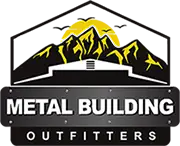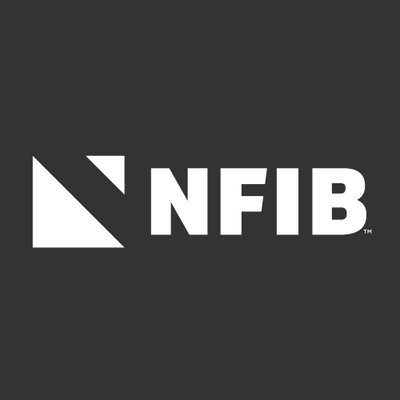
Contents
You might not realize that custom metal buildings can markedly enhance the efficiency of agribusiness operations. These structures aren’t just about aesthetics; they offer practical solutions that adapt to your specific agricultural needs. With their ability to withstand harsh weather and reduce maintenance costs, they can be a game-changer for your business. But how do these buildings stack up against traditional options when it comes to sustainability and scalability? Let’s explore the potential benefits and features that could transform your agribusiness.
Key Takeaways
- Custom metal buildings are eco-friendly and made from recycled materials, promoting sustainability in agribusiness operations.
- Their modular design allows for easy expansion and modifications to accommodate growing agricultural needs.
- Durable galvanized steel construction ensures weather resistance and low maintenance costs over time.
- Energy-efficient designs lower utility expenses while providing optimal conditions for livestock and product storage.
- Customization options enable tailored solutions for specific agribusiness applications, from dairy farms to grain processing facilities.
Benefits of Custom Metal Buildings
Custom metal buildings offer several significant benefits for agribusiness operations, making them an ideal choice for many agricultural applications. One of the foremost advantages is their alignment with sustainability practices. These structures are often made from recycled materials, reducing the demand for new resources and minimizing waste.
By choosing custom metal buildings, you contribute to a more sustainable future, which is increasingly important in today’s environmentally conscious market.
Additionally, metal buildings excel in energy efficiency. Their design allows for superior insulation properties, helping to regulate temperature effectively. This means you can maintain ideal conditions for storage and livestock, reducing energy consumption and lowering utility costs.
The durability of metal also ensures that these buildings withstand harsh weather conditions, minimizing maintenance and repair needs over time.
Moreover, metal structures are adaptable to various agricultural needs, from storage facilities to equipment maintenance areas. Their versatility enables you to modify or expand your operations without significant structural limitations.
This adaptability is essential in a sector that constantly evolves.
Key Features for Agribusiness
When considering key features for agribusiness, flexibility, and functionality stand out as vital elements in custom metal buildings. These structures are designed to adapt to the evolving needs of your operation, whether you’re focusing on livestock housing or equipment storage.
One of the primary advantages of custom metal buildings is their modular design. You can easily modify the layout to accommodate expanding herds or additional equipment without incurring significant costs. This adaptability supports your current operational requirements and positions you for future growth.
In terms of livestock housing, these buildings provide a safe, comfortable environment that promotes the well-being of your animals. You can create a climate-controlled space that optimizes health and productivity with customizable insulation, ventilation systems, and access points.
Additionally, the steel construction ensures durability and resistance to harsh weather conditions, which is vital for protecting your investment.
For equipment storage, the spacious interiors and robust construction of metal buildings allow you to organize and secure machinery efficiently. You can implement tailored shelving solutions and access points that streamline your workflow, making sure that your equipment is readily available when needed.
Design Options for Agricultural Structures
There are numerous design options available for agricultural structures that cater to the specific needs of your agribusiness. When considering your facility, you should prioritize flexibility and functionality. Open layouts are essential, allowing for easy movement of equipment and livestock while maximizing usable space. This design promotes efficiency, enabling your operations to adapt quickly to changing agricultural demands.
Incorporating sustainable materials into your structure aligns with modern environmental standards and enhances the longevity and performance of your building. For instance, utilizing recycled steel can reduce the carbon footprint of your project while providing the strength necessary for demanding agricultural environments. Such materials can withstand harsh weather conditions, ensuring your investment remains intact for years.
Additionally, consider the integration of natural light and ventilation in your designs. Large windows and strategically placed ventilation systems can improve the working environment for both workers and animals, promoting productivity and health. By prioritizing these features, you create a structure that supports your agribusiness goals while fostering a sense of community among your workforce.
Ultimately, the design options you choose should reflect your operational needs and sustainability goals. By focusing on open layouts and sustainable materials, you enhance your agribusiness’s productivity and contribute positively to the environment, creating a facility that you can be proud of for years to come.
Durability and Maintenance Considerations
Durability is a significant factor in the longevity of metal buildings designed for agribusiness. When you invest in a custom metal structure, it’s important to take into account how well it will withstand the elements and resist deterioration over time. Weather resistance and corrosion protection are essential attributes that ensure your building can handle the rigors of agricultural environments.
To help you evaluate these aspects, here’s a brief comparison of different metal building materials:
| Material Type | Weather Resistance | Corrosion Protection |
|---|---|---|
| Galvanized Steel | High | Excellent (zinc coating) |
| Aluminum | Moderate | Good (natural oxidation) |
| Weathering Steel | High | Moderate (rust patina) |
Choosing galvanized steel can provide superior weather resistance, thanks to its zinc coating that protects against rust and other corrosive elements. Aluminum, while lighter and resistant to rust, may not hold up as well in extreme weather conditions without additional treatments. Weathering steel, known for its unique rust finish, requires less maintenance but might not be suitable for all climates.
Regular maintenance plays a significant role in enhancing durability. Periodic inspections and minor repairs can prevent significant issues down the line. By understanding these durability and maintenance aspects, you’ll be better equipped to make informed decisions for your agribusiness, ensuring your investment stands the test of time.
Cost-Effectiveness of Metal Solutions
Metal solutions offer a compelling cost-effectiveness that agribusiness owners can’t afford to overlook. When you consider the initial investment alongside long-term operational costs, the benefits become clear.
These structures typically require less maintenance and have longer lifespans compared to traditional building materials. This longevity directly impacts your budget planning, allowing you to allocate funds to other critical areas of your agribusiness.
The upfront costs of metal buildings may seem steep but think of them as a smart investment. With lower maintenance requirements and energy-efficient options available, you can expect considerable investment returns over time.
For example, many metal buildings are designed with insulation options that reduce heating and cooling costs, translating to immediate savings on utility bills.
Moreover, metal buildings can often be erected faster than conventional structures, minimizing downtime and allowing you to get back to your operations quickly. This efficiency can greatly impact your bottom line, making it easier to manage your cash flow during peak seasons.
You’ll also find that metal structures offer flexibility in design, enabling you to customize space according to your specific needs. This adaptability can enhance productivity, leading to better overall performance in your agribusiness.
Case Studies in Agribusiness Applications
In this section, you’ll explore real-world applications of custom metal buildings in agribusiness, focusing on dairy farm storage solutions and grain processing facility designs.
These case studies illustrate how tailored metal structures enhance operational efficiency and meet specific agricultural needs.
Dairy Farm Storage Solutions
When considering storage solutions for a dairy farm, you need to evaluate how well structures can accommodate the unique challenges of agribusiness. Custom metal buildings are particularly advantageous due to their durability and adaptability. Proper design can ensure effective bulk storage and efficient ventilation systems, which are critical for maintaining the quality of dairy products.
Here are some key considerations for your dairy farm storage solutions:
Bulk Storage Capacity: Ascertain, the building can handle large quantities of feed, equipment, and materials.
Ventilation Systems: Incorporate systems that promote airflow, reducing moisture and preserving product integrity.
Access and Layout: Design for easy access to all areas, facilitating efficient workflow and minimizing downtime.
Climate Control: Consider insulation and temperature regulation to protect sensitive products.
Future Expansion: Plan for growth, allowing for modifications or additions as your farm scales.
Grain Processing Facilities Design
As dairy farms benefit from tailored storage solutions, grain processing facilities require equally specialized designs to effectively handle the demands of modern agribusiness. Ideal facility layout is essential for maximizing efficiency and ensuring seamless grain storage. You’ll want to reflect on various elements, such as workflow, equipment placement, and safety regulations.
| Design Element | Considerations | Benefits |
|---|---|---|
| Storage Capacity | Utilize vertical space | Increased grain storage |
| Workflow Efficiency | Streamlined processing paths | Reduced labor costs |
| Safety Compliance | Adherence to regulations | Minimized risk of accidents |
Incorporating these factors leads to a more functional grain processing facility. For instance, an effective layout can greatly enhance the movement of grain from storage to processing, ensuring timely operations. By prioritizing grain storage solutions that foster collaboration among workers and equipment, you establish a sense of belonging within your facility. Ultimately, investing in a well-designed grain processing facility meets current demands and prepares you for future growth in the agribusiness sector.
Wrap-Up
Custom metal buildings are like a sturdy backbone for agribusiness, providing unmatched versatility and durability. Their eco-friendly design and efficient construction streamline operations while accommodating your evolving needs. By investing in these structures, you’re not just enhancing functionality; you’re also ensuring long-term cost savings and minimal maintenance. As agribusiness continues to grow, these adaptable solutions will support your success and sustainability, making them a smart choice for any agricultural endeavor.
Recent Posts
What Are Your Options for Agricultural Metal Storage?
When you’re exploring agricultural metal storage options, it’s crucial to take into account the various
How to Choose Versatile Agricultural Metal Structures
When you’re considering versatile agricultural metal structures, it’s essential to start by evaluating your specific
Analyzing Costs of Custom Metal Buildings: A Guide
When it comes to custom metal buildings, costs can be like a puzzle waiting to


